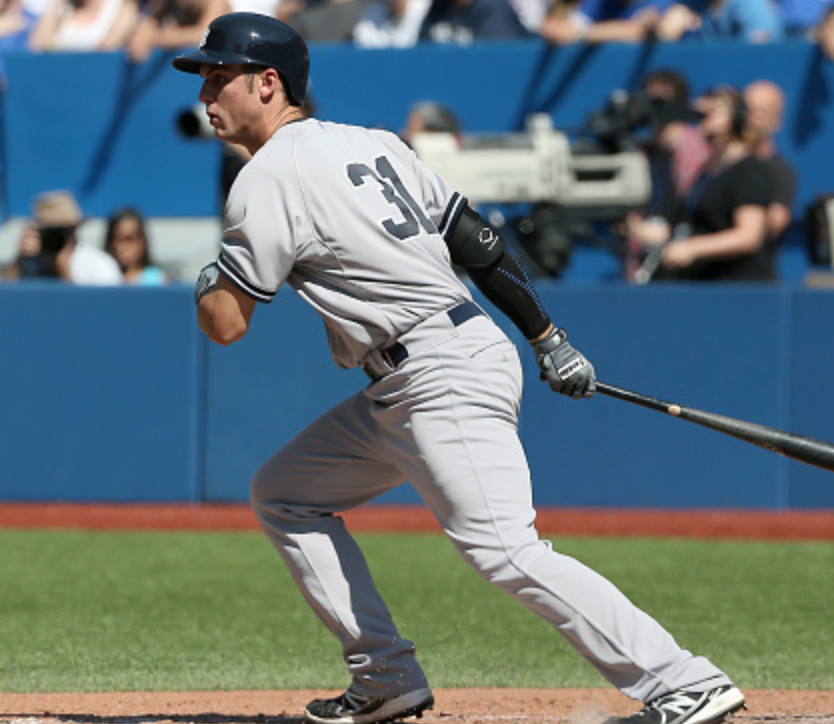Greg Bird has arrived. Considered the Yankees’ best first base prospect, Bird was ranked seventh in the Bombers’ farm system by Baseball Prospectus entering the 2015 season. Bird flew under the radar for a few years, as he was a fifth-round prospect who was not considered an elite offensive talent playing a position that demands top-notch skills at the plate. However, Bird was able to levy his hitting savvy into two strong offensive seasons: .288/.428/.511 in 2013 in Charleston followed by .271/.376/.472 in 2014 between Tampa and Trenton. After hitting .313/.391/.556 with 6 home runs in just 115 plate appearances, Bird won the 2014 Arizona Fall League MVP Award. Bird was hitting .277/.356/.469 in Trenton and Scranton Wilkes-Barre this season before being called up on Thursday, about half a season before most thought he would debut in the Major Leagues.
Bird is an offense-first player, and his two most often cited assets are his power and his patience. According to scouting reports, the first baseman has a slight uppercut in his swing, which helps him produce plenty of fly balls. Bird routinely logs fly ball rates over 40%, well above league averages that usually range from 25-30%. Bird’s strength allows him to lift those fly balls out of the park at twice the league average as well. His power also allows him to lift balls into the gap, as Bird averaged 33 doubles over the past two seasons and was on pace for a similar number this year. Bird’s left-handed power profiles well for Yankee Stadium’s short porch.
Bird’s swing does have a few holes, and his bat speed is average, producing a low number of line drives that will probably produce a batting average hovering around .250 in the Major Leagues. However, Bird’s patient approach at the plate helps make up for this. He draws rave reviews from scouts for his knowledge of the strike zone, which helps him draw walks. Bird has consistently posted walk rates over 10% and sometimes reaching 20% in the minor leagues. For context, a walk rate above 10% is considered above average. Bird’s excellent plate vision gives him the potential to get on base at an elite clip.
Some have criticized Bird for being too passive at the plate, which is a fair assessment, given that he has also posted strikeout rates above 20%. However, that hasn’t been the case in 2015, as his strikeout rate has been 16% in Double-A and Triple-A this season.
In the field, Bird is below average, as Joe Girardi’s replacement of him at first base with Mark Teixeira in the bottom of the ninth inning for defense over this past weekend reveals. Bird doesn’t have good range at first base, as he is consistently graded below zero by Baseball Prospectus’s Fielding Runs Above Average. Scouts do say that he makes the plays when the ball is hit near him, and the converted catcher does have a strong arm for a first baseman. He can hold his own at the position, but he’ll never be an asset there, and he’s not suitable for any other position.
In short, Bird is a powerful and selective hitter at the plate with minimal defensive skills whose greatest skill is his ability to get on base. Many scouts have compared him to Nick Johnson, which probably makes some Yankee fans gasp in horror, but usually with the caveat that Bird is more likely to stay healthy. Indeed, Johnson was a great asset to teams when he was healthy, as he could knock 15-20 home runs and post on base percentages well over .400 the few times he played full seasons in his injury-shortened career. Bird probably has slightly more power and slightly less on-base ability than that, but if he could consistently put up numbers similar to Johnson’s at his peak in today’s offense-starved environment, he would be a boon to any team.






